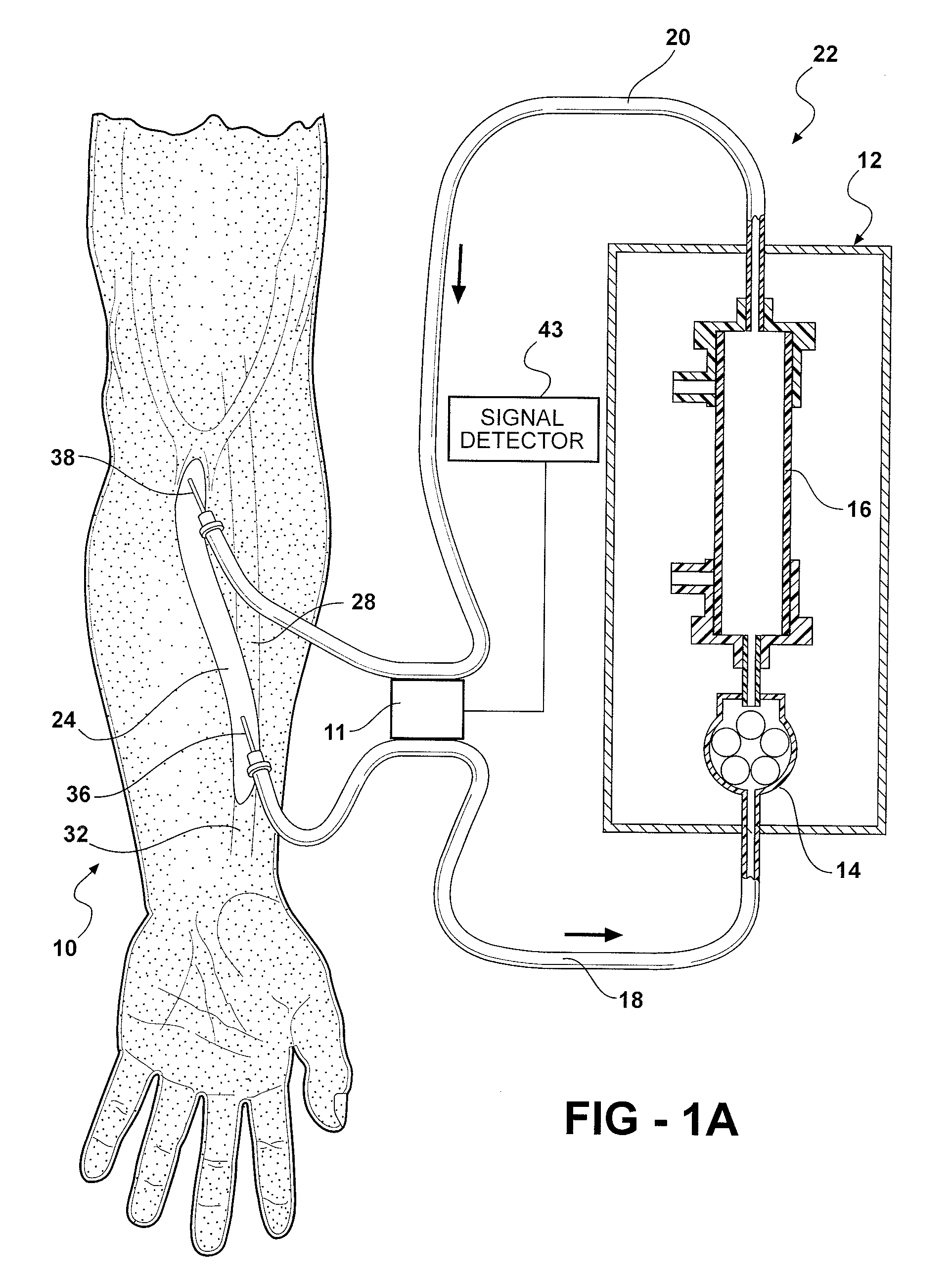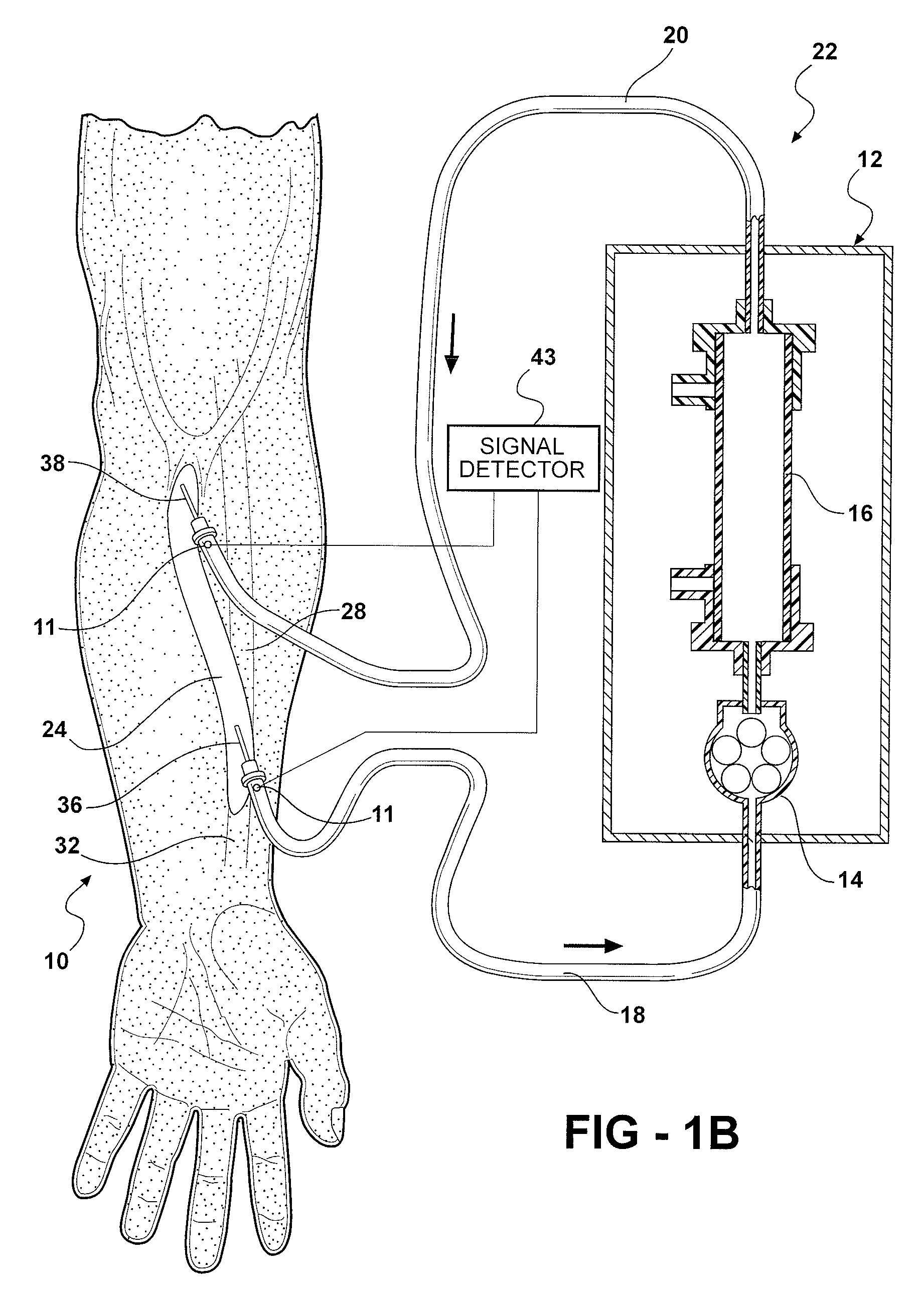Methods and Systems for Determining Volume Flow in a Blood or Fluid Conduit, Motion, and Mechanical Properties of Structures Within the Body
a technology of volume flow and blood or fluid conduit, applied in the field of hemodynamics, can solve the problems of frequent occurrence of malfunction of such an access in patients receiving chronic hemodialysis, reduced blood flow, undesired recirculation
- Summary
- Abstract
- Description
- Claims
- Application Information
AI Technical Summary
Benefits of technology
Problems solved by technology
Method used
Image
Examples
experiment i
[0105]An vitro study was performed to determine the differential intra-luminal pressure (? P) and flow (Q) relationships in geometry dependent models mimicking arteriovenous graft (AVG) vascular circuits to explore the future development of implantable or extra-corporeal devices using differential pressures to estimate flow for dialysis access monitoring. ? P and Q were obtained using AVG inner diameters of 4.76 mm, 6.35 mm, and 7.95 mm, at separation distances from 2.5 cm to 20 cm, with flows ranging from 0 to 1968 ml / min. Mean and standard deviation values were compared with linear (Poiseuille's), and second order polynomial (Young's) models to model laminar and turbulent flow patterns respectively. Experimental ? P measurement ranged from ±0.015 to 46.95=±0.568 mmHg for the range of studied access diameters at flows from 65 to 1968 mL / min. In conclusion, differential intra-luminal pressure may be useful in flow estimation for dialysis conduits in future implantable or extracorpor...
experiment ii
Materials and Methods
[0121]A laboratory flow phantom system was constructed using two parallel fluid conduits to simulate the patient blood circuit communicating in parallel with the dialysis blood pump circuit to test the geometry independent algorithms for flow determination. In these experiments, different access diameters were used (4.76 mm and 6.35 mm inner diameter) to approximate arteriovenous graft inner diameters, as well as a glycerol-containing solution to simulate the viscosity of blood at 37% hematocrit. The dialysis circuit was assembled to generate measurable flow rates with an adjustable non-pulsatile roller pump (Masterflex Cole Parmer, Vernon Hills, Ill. Console Drive Model 7520-40) with flow rates measured using a McMillan (Georgetown, Tex.) S-110 digital flowmeter and a Gilmont flow meter (Thermo Fisher Scientific) which was calibrated in our laboratory to ensure the accuracy of simulated dialysis pump speeds ranging from zero to 500 ml / min. Th...
PUM
| Property | Measurement | Unit |
|---|---|---|
| diameter | aaaaa | aaaaa |
| diameter | aaaaa | aaaaa |
| pressure | aaaaa | aaaaa |
Abstract
Description
Claims
Application Information
 Login to View More
Login to View More - R&D
- Intellectual Property
- Life Sciences
- Materials
- Tech Scout
- Unparalleled Data Quality
- Higher Quality Content
- 60% Fewer Hallucinations
Browse by: Latest US Patents, China's latest patents, Technical Efficacy Thesaurus, Application Domain, Technology Topic, Popular Technical Reports.
© 2025 PatSnap. All rights reserved.Legal|Privacy policy|Modern Slavery Act Transparency Statement|Sitemap|About US| Contact US: help@patsnap.com



